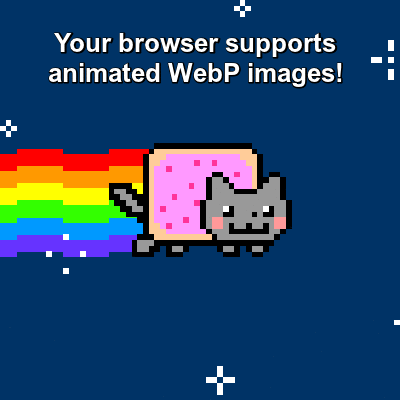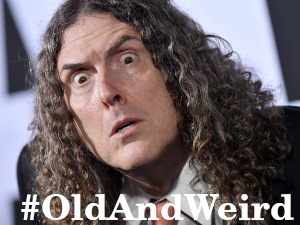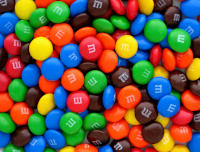Linux and Android handles .webp just fine tho, in windows try open source image viewer like imageglass and everything gonna work just fine, speaking from experience i had, just as most people here i hated that webp doesn’t open until i understood that open source image viewers handle it just fine, then i liked that file format cause it’s versatile i mean, it can be picture or animation like gif, and compression feels better
I’m using XNView since forever and it has support for pretty much any format imaginable, including webp.
Linux and Android handles .webp just fine tho
I can’t speak for all distros and DEs, and I also don’t do many image related things, but I’m using Linux Mint Cinnamon and the default desktop background manager doesn’t support .webp. Sometimes I see a cool image that I want to use and I have to convert it; other times, when I notice it’s .webp, I just give up on that image.
Strange, I’m using lmde6 and it handles everything just fine, i just rechecked it and it set .webp wallpaper just fine on my lmde6 cinnamon
Webp works fine for me now.
The problem is AVIF. I mean I love AVIF (almost as much as JPEG-XL), but it doesn’t work with anything except browser web pages, even after all this time.
For me webp is always some gif I’m trying to text people, and now I have to go convert it.
My only concern with jpeg xl is… how do you know if the encoded file is losslessly compressed or not?
with jpg and png, one is lossless, one is not. But if all the files have a jxl extension, you can’t know unless the encoder adds metadata for it, right?
I felt the same way about webp when it came out.
In practice it doesn’t really matter:
- if you’re encoding the file you know how you’re doing it.
- if you’re receiving the file, you get the pixels you get no matter how it was encoded.
- if you’re sending the image through some third party service, they’re going to reencode and mangle it anyway so there’s no point in worrying.
Also, it turned out that even if it’s quite good, lossless webp is rarely seen in the wild because svg is more convenient.
I don’t understand what people’s problem with this format is except in the case of animated .gifs. I can view it. I can reupload it. It’s still an image and it still works. The exception is animations. Animations always end up as a still image when saved in that format.
I do this little trick where I change .webp to .jpg
Just change the extension to PNG
Do people really think this changes the file type?
No I don’t think it does but it works. Specifically I download webp pictures on pc and when I try to send them on WhatsApp it does not recognise them so I change the extension to JPG or PNG and it works it sends them and they can be viewed.
Sounds like the file type verification on WhatsApp is not on mime-type but only on extension. Some receivers might have trouble opening these though.
Snipping tool is for snipping, screenshots are for cropping.
Old meme.
Pretty much everything supports it now, and in case you haven’t noticed pretty much all the images on Lemmy are webp because it lets instances save tons and tons on bandwidth and storage.
The next “better but not yet supported” image format is .avif.
Not the end of the world, but out of the few apps that don’t fit in the ‘pretty much everything’ group, messenger is one of them and I can’t share a good bunch of memes on Lemmy with my friends because of that. I usually end up screenshotting my own screen because of that.
Avis Libre gallery can convert images from/to WEBP.
The format was introduced 13 years ago. Meta had the time, and we know they have the resources.
This is 200% on messenger being shit piece of crap software.
Every time I have to fire up my Fb account, I’m stunned at how shit React is. It’s appalling how bad that framework has become. Maybe if they cared about implementing solid code and less about raping your life of metadata in order to sell you the worst products on the planet thru their “partners” things would be better.
Heh, AOMedia Video Image Format
Yeah it uses the AV1 video codec for compression. Which go figure, works reaöly well for images, too! And the format can do animated images, too.
Cool, a replacement for GIFs too.
Next you’ll tell me you can add sound to it and make AVIFs with sound, won’t you?
spoiler
Someone once said something to the tune of “Imagine if GIFs could have sound”, to which people pointed out that those are just called videos.
As is webp. Animated webps have been a thing this whole time.

Animated webps have been a thing this whole time.
Reading this in Sam Reich’s voice.
Now we just need a Brandon Lee Mulligan flavored fully charged rant about the billionaire class of corporatists forcing webp with its patent encumbrance on us all.
I actually decided to use avif on my project. But both this and webp is as fast as I know, not supported in any default image viewer on windows. Which is rater annoying, but I moved on to better programs for tgat anyways.
Avif is second to jxl though, some of the downsides of being a video format is that you loose progressive loading (only top to bottom iirc), degrades on re-encodes, and some other things I can’t think of. Avif gets a win because if you have a av1 decoder you already have a avif decoder too! But since it is a video frame essential there are some downsides since some image specific features can’t or won’t be added.
Also if you have video in AV1, you can rip out Group Of Frames from it and package in avif without any loss.
.avif is supported by all major browsers but application support sucks.
Indeed. Ready for websites, not everyday media files.
What doesn’t support avif? Even Apple devices support it and they are usually the last to adopt anything. I’ve crushed all my website using it and it turns a 1MB image to 80KB without quality loss, absolutely amazing compression!
In websites it works great, there isn’t browser around that can’t deal with it. Same how with when webp we’re new you’d run into them all over the web because there they were just better and worked fine.
It’s everything else that isn’t ready yet. My older android device can’t deal with them in apps, no AV1 decoder maybe? Dunno.
Not many processors have AV1 hardware decoders yet (Apple thru them in on their M3’s last year and latest iPhone 15 Pros) so I can’t see it being that. There’s also software decoding that works fine. My wallpaper on macOS has been avif since last year (Sonoma) and works without issue. I don’t think it works in Windows 10 tho. No issues with the latest Ubuntu and I’m not familiar at all with Android OS.
In any case, I think it’s the best thing to come out in a long time. My website with raw PNGs was about 120MB. I crushed those PNGs with noticeable quality loss down to 50MB. I then crushed the original 120MB down to 60MB with minimal to no visual quality loss using webp. But I got it down to 25MB without loss using avif at 85% compression. Just insane performance, couldn’t be more impressed!
I’ll change my mind about .webp when Microsoft Teams can recognize it as an image and display it correctly.
I’ll say the same thing about teams as I did messenger.
The format was introduced 13 years ago. MS had the time, and we know they have the resources.
This is 200% on teams being shit piece of crap software.
Okay can someone please explain why Facebook Messenger on my phone keeps saying it can’t support gifs? Yes yes I’m an old man, but on the other hand what the fuck, fucking gifs? Are they devolving faster than Google?
(Also like, the gif feature built into Facebook Messenger itself. The longer I think about this problem, the more I think the app is just throwing the wrong error)Messenger is just crap.
Not avif, but jxl
webp is better than jpeg, png or any other file format
Even if it wasn’t, you could just convert it to .jpg if you felt strongly about it. Not as though there’s a compatibility issue.
The complaint people are having is with resizing/manipulation after download. They want these enormous uncompressed files floating around on every website, in the off chance they plan to download it and manipulate it. 99.9% of the web needs to be full of megabyte sized image files for the 0.1% y’all want to play with.
But the best image format to download is the original one it was uploaded in, without the recompression of server-side conversion to a lossy webp which we’re seeing all over the place.
The technology that managed to accomplish what NFTs couldn’t.
At least it’s not a .art file
If you get this reference, remember to take your daily meds on time.
Referenced acknowledged.
After all, we have CompuServe to thank for the proliferation of .gif.
I use the Firefox extension Save WebP as PNG or JPEG (Converter).
Same. Very useful.
I got excited when I saw this post because I knew someone in the comments would have a solution!
If you want to save a *.webp file, just change the extension to *.png. There is no need for a converter.
Is this comment meant in jest? If not, could you explain what exactly you mean by “no need for a converter?”
I’m quite certain that’s not how it works. No actual file data conversion is happening when you do that unless you’re using additional tools e.g. extensions.
Iirc .webp supports a fallback to PNG compression, so this actually works with some.webp files. I could be completely wrong tho.
Hey, thanks for the input. I’d like to read more about this, but I can’t seem to find anything related online. Anything else you could share?
Just checking, you sure you’re not confusing fallback-to-PNG when the browser doesn’t support webp? Because that’s a bit of separate issue, and not a terribly relevant one since all major browsers have supported webp for a while now.
You could’ve tried it yourself in the time it took you to craft this reply.
It has nothing to do with the browser. Change extension or just save originally as .png instead of .webp
Can pop the file right open in any image editor that can fart with pngs, post directly anywhere else, like Discord.
You could’ve tried it yourself in the time it took you to craft this reply.
God I hate it when people have no social skills and talk like this.
How the f— do you know the circumstances of the person you’re talking to? Maybe they don’t have a computer at hand.
Don’t you realize how snotty and bratty and annoying this sounds, regardless?
Bah.
I think I know what you’re talking about, and I think you might have misunderstood a few things. I’ll explain my point and I’d appreciate it if you could confirm later whether it helped, or if I’m the one who misunderstood you.
“Saving as…” is, usually, just for setting the name of the file. The full filename, extension included. The extension is just another part of the name. It doesn’t define what rules the file’s contents actually follow. They’re for other purposes, such as helping your operating system know which software to use when opening each file. For example:
User double clicks a
.pdfSystem: Oh, I should try opening this in Adobe Acrobat.But that doesn’t mean the file is actually a PDF. You can change the extension of any file, and it won’t automatically be converted to that extension (unless a specific feature has been added to make that implicit conversion). You could give a binary a
.pdfextension and your system might then try opening it in Acrobat. Of course, it won’t work—there’s no way the system could have automatically made that conversion for you.So you might wonder, why does your (fake) PNG (which is really just a webp with an incorrect extension) still work just fine? You can open it, view it, send it. What’s the trick?
Thing is, the software that actually deals with those files doesn’t even need to care about the extension, it’s a lot smarter than that. These programs will use things like magic bytes to figure out what the file they’re handling really is and deal with it appropriately.
So in this scenario, the user could save a webp file as PNG.
funny cat.png(still a webp!)Then they might double click to open it.
System: How do I open a
.pngagain?.webp-> try the image viewer.jpeg-> try the image viewer.png-> try the image viewer (there it is)
And finally, the image viewer would correctly identify it as a webp image and display it normally.
Image viewer: reading magic bytes… Image viewer: yeah, that’s a webp alright
The user might then assume that, since everything works as expected, they properly converted their webp to a PNG. In reality, it’s all thanks to these programs, built upon decades of helping users just make things work. Same with Discord, Paint.NET, etc. Any decent software will handle files it’s meant to handle, even if they aren’t properly labeled.
If you were to check the file contents though, using a tool like
file,czkawkato find incorrect extensions, or even just checking image properties, it should still be identified as a webp.I didn’t try it myself as you said because, to my understanding of files and software, doing so made no sense. But again, do tell if I got something wrong or misinterpreted your comment.
Are you sure? Maybe your image viewer adapts to the magic number and recognizes the webp file as webp anyway. I believe the formats are fundamentally different.
Note: this DOES NOT convert the file (obviously) although it will force it to be ‘usable’ in certain cases. If you bring the same file to a program that cannot work with webp format (ex. Da Vinci Resolve), it will crash or not show. To non-creators this is not an issue, but for creators: have fun figuring out which images you’ve saved are actually webp and won’t work later on.
I know webp has become much less annoying after windows finally added webp support to photos after w11, so ‘advice’ like this tends to work more often than not. Just use a browser extension and convert it properly if you intend to spread an image…
have fun figuring out which images you’ve saved are actually webp
file * | grep -i webpor something?
I hate .webp, almost no software supports it. I can see it reduces the amount of space, but I’m always having to convert it
The only program that I ever use that doesn’t support webp is Facebook Messenger.
Lucky
That format is awful from a user perspective.
How so. I get that the support isn’t there yet, but how is the format itself awful
Literally, you answered your own question. From the user end, unsupported file types of any frequently shared format are garbage. No one cares on the user end about server space. They care about sharing a funny image. They don’t care about 2 extra ms of load speed. They want shit to just work.
It’s the same reason Open Office sucks. You can’t rely on it to just work. As much as dev’s hate it (myself too), reliability is king. Webp fails this measure, badly.
The format itself is perfectly fine, it’s just that most software doesn’t work with formats made in the 21st century
Why? I use it all the time and never had issues with it
I do this little trick where I change .webp to .jpg
Webp is great for web images tbough






















